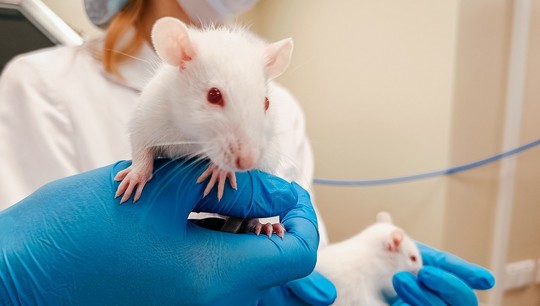Scientists Make Strides in Uncovering the Minimum Dangerous Dose of Nanocopper for the Human Body
Scientists from Russia and Germany have studied the effect of copper oxide nanoparticles on the organism of laboratory animals and have come close to determining the minimum dose of nanocopper dangerous for the organism. The findings of the researchers can be used to develop methods for early diagnosis of nanocopper poisoning and the pathological conditions caused by it. An article describing the content and results of the work was published in the journal Scientific Reports. The research was supported by the Ministry of Science and Higher Education of the Russian Federation as part of the Priority 2030 Strategic Academic Leadership Program.
In a toxicological experiment, male white rats were exposed to copper oxide nanoparticles for six weeks. The total dose was 18 and 36 milligrams per kilogram of body weight, respectively, for each experimental group. The choice of doses was based on the fact that the introduction of larger amounts of nanoparticles would lead to known and pronounced negative effects on the animal’s body. This time, the scientists were faced with the task of tracking early changes at deeper – genomic and molecular – levels.
After exposure to the toxicant, the researchers analyzed changes in the animals’ blood and internal organs. The analysis showed that the concentration of succinate dehydrogenase (SDH), an enzyme located in intracellular structures, mitochondria, which are responsible for energy production in the cell, decreased in the nucleus cells. Disruption of the normal functioning of mitochondria negatively affects not only cellular processes but also the work of the entire body. Thus, mitochondrial dysfunction is considered a key factor in the initiation and development of many diseases, including neurodegenerative diseases (Alzheimer’s, Huntington’s, and Parkinson’s) and cancer.
“Importantly, the effects of noxious agents – both the nanoparticles themselves and the oxidative stress they induce – were evident even when tested doses of copper nanooxide were administered. We were able to identify some of the prerequisites for the development of mitochondrial dysfunction. The negative impact on the nervous system of the experimental animals is probably realized through the initial effect of copper nanooxide on gene expression,” comments Yuliya Ryabova, a member of the UrFU Laboratory of Stochastic Transport of Nanoparticles in Living Systems and the Department of Toxicology and Bioprophylaxis of the Ekaterinburg Medical Research Center for Prophylaxis and Health Protection in Industrial Workers.
The studies described showed neurodegenerative effects that scientists believe are associated with disruption of the hippocampus, an organ involved in the formation of navigation and emotion, attention, and memory.
“In addition, the damage affected the liver and kidneys of the laboratory animals. We saw it both at the cellular level and at the level of individual organs and the whole organism. For example, the functions of the liver were disturbed, and dystrophic processes were observed in its cells. There were changes that indirectly indicated an increased risk of thrombosis, disorders in the immune system, and the emergence of inflammatory processes in the body,” Yuliya Ryabova points out.
Based on the observations, the scientists concluded that a total dose of 18 mg/kg body weight of copper oxide nanoparticles (or just 1 mg/kg administered three times a day for six weeks), approached the threshold for rats.
“The effects of exposing a living object to high doses of copper nanoparticles have been well studied. However, nowadays there is a tendency to reduce the level of chemical pollution of people all over the world. Modernization of enterprises, improvement of technologies, and increase of efficiency of air filtration systems in production lead to reduction of pollutant emissions from industry. These processes require verification of the health effects of other, so far unexplored doses of copper nanoparticles. On the one hand, this will allow us to determine the thresholds below which harmful effects are not detected, and on the other hand, in the future our research can be used to develop methods for early diagnosis of copper poisoning and pathological conditions caused by it,” Yuliya Ryabova explains the significance of the research conducted.
In addition to representatives of the UrFU and the Ekaterinburg Medical Research Center for Prophylaxis and Health Protection in Industrial Workers, employees of the Ural State Medical University and the Friedrich Schiller University Jena (Germany) took part in the research.

